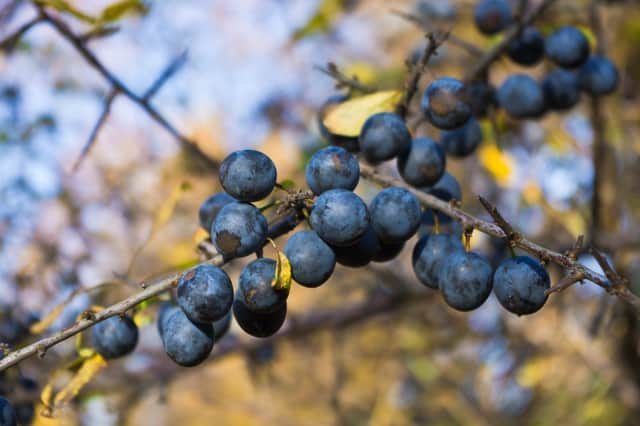Making Sloe Gin: Here's how and when to find and harvest sloes - and the perfect recipe for sloe gin


There are few more festive drinks than sloe gin, with numerous delicious examples available to buy from Scottish producers.
But there's something special about making your own winter tipple - and Scotland is a great place to hunt down the bitter purple berries that give the drink its unique taste and colour.
Advertisement
Hide AdAdvertisement
Hide AdYou're too late to have it ready to drink for this year, but here's everything you need to know to make your own batch for Christmas 2024.
What is a sloe?
Sloes are the fruit of the blackthorn plant - a shrub with long sharp thorns which is traditionally used in Britain to make cattle-proof hedges.
Centuries ago the berries were reputed to have magical powers, playing a major part in Scottish herbal medicine of the day, while the tree itself signified death and warfare.
In Scottish witchcraft the start of winter was marked with a ceremony that would see the ground thrashed with a blackthorn staff.
Too bitter to eat raw, in the modern day sloes can be made into jam and chutney or used in fruit pies. The most popular use, however, is to make sloe gin - versions of which exist all over Europe, including the Basque drink patxaran.
Where to find sloes
Blackthorn trees and bushes grow all over Scotland but the location of the best sloes is often a closely-guarded secret to allow gin makers to wait until the perfect time to harvest without somebody getting there first. Matters are complicated somewhat by the fact that not all blackthorn trees will bear fruit every year for a number of reasons, including over-harvesting.
The truth is that they can be found everywhere from remote countryside to city parks. Your best bet is to search hedgerows separating agricultural fields.
If you are organised hunt for blackthorns in spring, when their dense white blossom is hard to miss. Take a note of the location, return in autumn, and hope you're the only one to have spotted them.
Advertisement
Hide AdAdvertisement
Hide AdHow to identify sloes
The blackthorn can be identified by its small (up to 5cm), oval leaves with slightly serrated edges, a slightly sticky top surface and hairy underside.
It tends to grow in a bush-like structure as part of a hedgerow and has long straight thorns. The sloes themselves should be round and purple in colour. Damsons (which can also be used to flavour gin) are larger and more oval in shape.
When is it best to harvest sloes?
To make the best sloe gins you want the sloes to be as ripe as possible, meaning they will be a rich dark purple colour and have some give when you squash them between your fingers. If they have started dropping off the bush onto the ground it's a good sign.
Traditionally people would wait until after the first frost of the winter to pick them. but with increasingly mild winters in Scotland that's not ofter practical. The first two weeks of November tend to be the best time for a sloe harvest.
How to make sloe gin
Ingredients: 500g of sloes, 250g sugar, 70cl of gin
Step One: Wash the sloes, remove any stems and prick each sloe with a cocktail stick.
Step Two: Place the sloes into the freezer overnight
Step Three: Put the frozen sloes into an airtight 1.5 litre jar (Kilner jars are perfect for this), add the sugar and then slowly pour in the gin of your choice (we prefer a plain London Dry, but any non-flavoured gin will be fine).
Step Four: Place the jar in a dark, cool cupboard away from central heating pipes.
Step Five: For the first week, give the jar a good shake every day until you can see that all the sugar has fully dissolved.
Advertisement
Hide AdAdvertisement
Hide AdStep Six: Leave the jar for a minimum of three months - although the best tasting slow gins require you to be patient for around a year. It means you'll have a lovely drink for Christmans next year.
Step Seven: Decant into bottle - smaller ones make great gifts.
Step Eight: Drink it! Enjoy it neat, or with lemon tonic over ice with a citrus garnish.
Comments
Want to join the conversation? Please or to comment on this article.